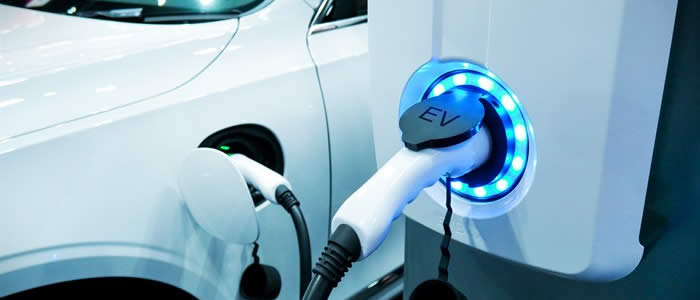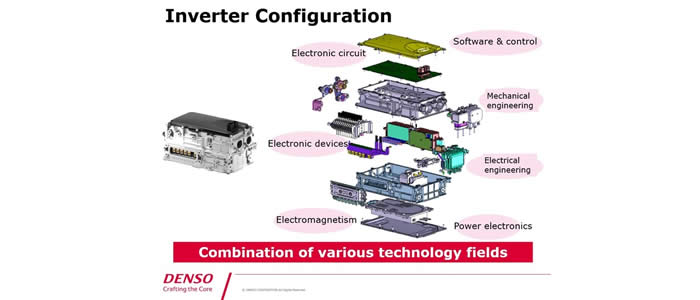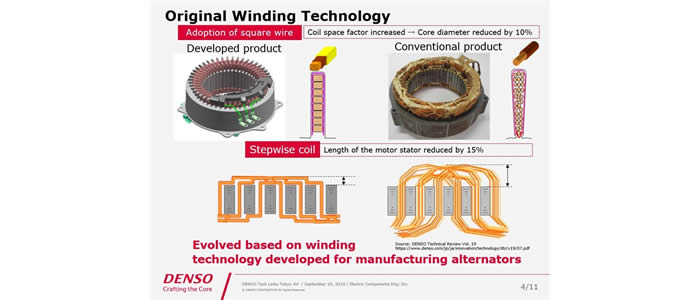
Revealed: Two essential EV parts you need in your workshop
With regulators setting ever-more-ambitious emissions targets, the age of electric vehicles will soon be upon us. Workshops might feel unprepared to deal with electric and hybrid vehicles – but by partnering with DENSO, they can have access to the right parts, knowledge and support to ensure they have a competitive advantage as electrification continues to gather pace.
Everyone is talking about electrification. Particularly in Europe, the trend for electric-drive vehicle (EV) development and sales is advancing rapidly. Even as car sales in general took a hit amid the Coronavirus outbreak, sales of plug-in vehicles (pure EVs and hybrids) were resilient, and now account for 7.9% of car registrations – more than doubling their market share since last year.
What does this mean for workshops, a large proportion of which are more accustomed to working on internal combustion engines? For most, the EV trend presents several opportunities to learn new skills and maximize new profit sources. DENSO is committed to working closely with distributors and workshops, developing the highest quality, OE-specification EV parts, and making them easy to stock, fit and service.
Electrification: Why and when?
It’s commonly understood that electrification is good for the planet – but there are more factors than that driving OEM electrification strategies. Here are just a few:
- Environmental. The number of vehicles on the road, and therefore CO2 emissions, are increasing. Motorists are increasingly seeking out more environmentally friendly forms of transport as they become increasingly aware of their own carbon footprints.
- Legislative. Tighter controls are being placed on CO2 emissions. Europe is set to become the world’s strictest in this regard: its target for 2030 is to reduce vehicle emissions to 59g/km. This necessitates a move towards electric or hybrid powertrains.
- Technological. The energy sources used to power electric-drive vehicles are diversifying, making them a more practical option for manufacturers, distributors and motorists.
- Performance-related. There are dynamic performance elements unique to electric-drive vehicles, including responsive acceleration.
As EV uptake accelerates, what does this mean for workshops? Initially, it means a new set of essential parts to consider. In a field where technology is continually developing, it is important to have access to the best parts possible; this is something distributors and workshops can ensure by working with DENSO.
Essential part 1: The inverter
The basic electric-drive vehicle system consists of three main components: battery, inverter, and motor. This system can take several forms – pure EVs, hybrid vehicles with both an ICE and a battery, plug-in hybrid vehicles that employ many batteries, fuel cell vehicles which use hydrogen as fuel – but at their core, all these systems use a motor, so they all need an inverter.
Simply put, an inverter is a power converter. Vehicle batteries supply DC power, while the motor needs AC power for flexible control. Thus, an inverter acts as an intermediary between the battery and motor, converting electric power from DC to AC.

An inverter is a complex component. Developing an inverter requires a combination of knowledge about circuits, software, control and mechanical engineering. This is where DENSO excels, since it already has a strong technology base and stakeholder network in relevant fields such as electronics and heat exchange.
DENSO’s inverter achieves market-leading electrical performance, with a two-sided cooler to minimize energy lost as heat and a high-efficiency silicon carbide semiconductor. The inverter is also optimized to work in the severe in-vehicle environment, being able to withstand washing by a high-pressure washer, soaking in seawater, and the impact of being dropped.
Essential part 2: The motor generator
Another enabler of electrification is the motor generator. Its name summarizes its function: it is a mechanical unit that functions both as a motor and as a power generator, switching between the two roles according to the status of the vehicle or battery.
When the motor generator is used as a motor, it provides assistance power to start the engine or accelerate. When it is used as a power generator, it steadily regenerates energy during vehicle deceleration and charges the battery.
DENSO’s technology is instrumental in the further development of the motor generator, which will be a significant step to overcoming one of the biggest objections to electric-drive vehicles: range anxiety. A high-efficiency motor generator will consume less energy from the battery, giving the vehicle a greater overall range.

DENSO’s original motor generator technology differs from a conventional product in two ways. Firstly, it uses square wire as opposed to the more common round wire, decreasing gaps in the motor core and ensuring higher output from the same cubic volume. Secondly, the wire coil is neatly wound in a stepwise pattern, meaning the winding height can be reduced and so the entire motor can be downsized. DENSO’s vast experience of alternator design and production has given it the insight needed to make these technological breakthroughs.
The DENSO commitment
DENSO has declared its commitment to the electrification of all fields, from personal mobility vehicles to aircraft. The company has considerable experience developing vehicle systems from the perspective of the entire vehicle. As such, individual EV parts are designed to work in harmony with wider vehicle components.
DENSO’s mission is to ensure electric-drive technology continues to evolve to make it more accessible and practical – such as through battery size reduction, or expanding the size of in-wheel-motor electric vehicles. In doing so, DENSO and its customers are contributing to social responsibility and sustainability on a large scale.


 English
English  Български
Български  Česky
Česky  Dansk
Dansk  Español
Español  Ελληνικά
Ελληνικά  Finnish
Finnish  Français
Français  Hrvatski
Hrvatski  Italiano
Italiano  Magyar
Magyar  Nederlands
Nederlands  Norsk bokmål
Norsk bokmål  Polski
Polski  Português
Português  Română
Română  Русский
Русский  Svenska
Svenska  Україна
Україна